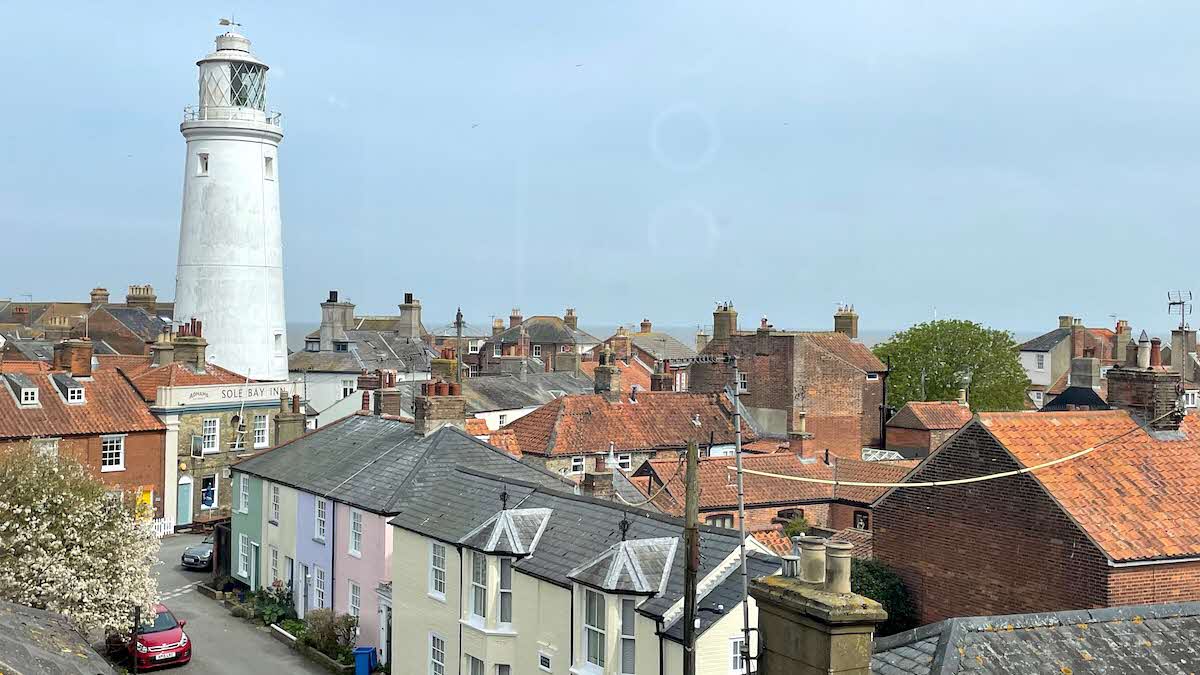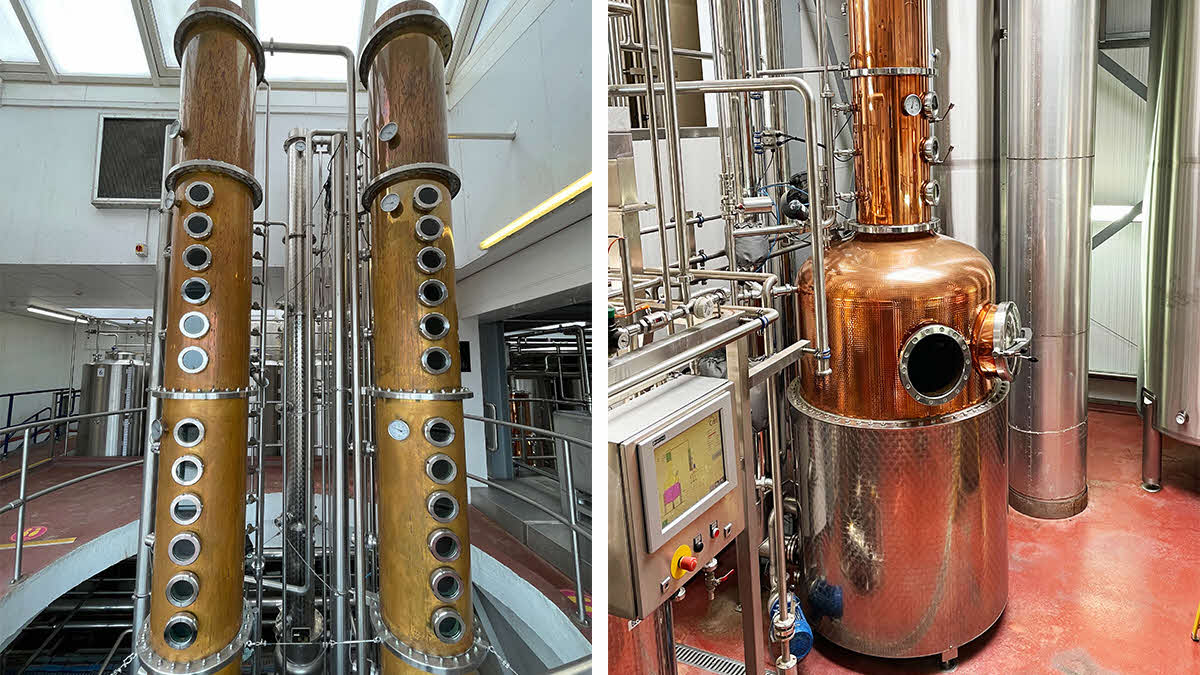Book a Club campsite
Explore hundreds of Club campsites and plan for stays throughout the year. There are plenty of locations to choose from, search and book today.
Book nowJonathan Manning experiences botanical alchemy on a gin-making course in Suffolk
 Historic Southwold Lighthouse
Historic Southwold LighthouseOn every camping trip there seems to be a golden hour every day that bridges the end of the afternoon with the start of the evening. Whether the pitch looks over mountain, moorland, city or coast, and whether the day has been spent on a high-octane adventure or flat out in a hammock, these sublime 60 minutes are a time to kick off shoes, wash sand from flip-flopped feet and collapse into a chair.
The only element missing from this vision of bliss is a tipple to turbo-charge the waves of relaxation washing over the weary camper, and, better still, a tipple tailored uniquely to individual taste buds. All of which brings me to Adnams in Southwold, Suffolk.
Famous for brewing beer, Adnams branched out into distilling in 2010, and today I’m enjoying a hands-on gin making experience. Gin contains a complex blend of flavours – while juniper is a constant, a cocktail of botanicals ranging from floral to fruity, herbal to spicy gives each concoction a distinctive flavour.
Once maligned as ‘mother’s ruin’, gin has become the UK’s most popular spirit, served in ever-more elaborate ways with garnishes of lavender, rosemary, peppercorns, and raspberries. The days of ice and a slice of wilted lemon have long gone.
 Above left: distilling on a grander scale. Above right: inside Adnams Copper House Distillery
Above left: distilling on a grander scale. Above right: inside Adnams Copper House Distillery“There’s only one rule to making gin – enjoy the taste,” says Kate, our instructor for the afternoon, presiding over a room that is part Hogwarts, part school science lab. On raised benches around the walls is a series of small, handmade Portuguese stills, each one named after Adnams ancestors, including the company’s co-founder George, who, having joined a volunteer cavalry regiment, was reportedly eaten by a crocodile in Africa.
The stills look like something fashioned by a mad professor in a garden shed: a copper bulb at the foot of a tower, with a hot plate below and an angled pipe leading into a copper condensing jar, from which a tube extends into a glass beaker.
It’s a miniature version of the industrial Copper House Distillery complex that we’ve just toured, exploring the entire process that sees the creation of an un-hopped beer that is distilled into a ‘low wine’ (ABV 80%) before being distilled again to create a pure vodka (ABV 96+%). This super-smooth vodka is then diluted with pure water to provide the base for our gins.
The alchemy comes from deciding which botanicals to add in order to create a personalised drink. On the table in front of us are jars of 36 different botanicals, grouped loosely under five headings. The aniseed flavours include liquorice root, fennel and star anise. Peppermint, sage, chamomile and thyme feature among the herbal flavours. The fruits are largely citrus – the peels of grapefruit, lemon, orange and lime. Elderflower, lavender and rose petals represent the floral flavours. And allspice, pink peppers, ginger root and cloves lead the spices. Each jar has a strong aroma, although the desiccated botanicals have a taste and texture closer to wood shavings.
Kate explains how flavours can follow the seasons – citrus and floral for summer, spicy for winter – and also how different categories can merge and enhance each other. A micro-dose of peppermint, for example, can brighten the fruit flavours, while the herbal and floral botanicals add delicate layers of flavour to sister categories.
I opt for a majority of citrus botanicals, with a floral smidgin for extra freshness. It only takes a tiny measure of botanicals to flavour the gin, and under Kate’s instruction I weigh out on exceptionally precise scales a single gramme of elderflower, 4g of grapefruit and orange peel, 3g of lemon peel, 14g of juniper and 1.5g of orris root, before tipping my recipe into a still, sloshing in a bottle of Adnams triple-distilled Long Shore vodka, and turning up the heat.
While the distillation process does its work, boiling the botanical-vodka mix, Kate pours generous measures of Adnams gins for us to try. Tested side-by-side with the same tonic, it’s surprising how different they taste. The lucky non-drivers in our group of four get to sample themed gins, too, such as raspberry-based pink gin, seasonal quince gin for autumn, and sloe gin for winter warming.
The gins we are making are traditional London gins – a base spirit flavoured with juniper plus extra natural botanicals, but no sugar – and it’s not long before a clear liquid starts to flow from the condensing jar into the beaker. The distillation process has left the botanicals in the still and reduced the original 700ml bottle of vodka to 350-400ml of strong gin (ABV 45%). This we dilute with pure water to create a full bottle of uniquely personalised spirit, with the opportunity to name and label it for further campsite kudos.
With a little more ima-gin-ation I should have come up with a better name (‘Keep your gin up’, ‘Ginnocent’, ‘Spirit of Adventure’…), but I’m already thinking ahead to one of this summer’s golden hours, a goldfish bowl of a glass filled with ice, a measure of my very own gin, and chilled tonic. Cheers.
A selection of gin-making experiences within reach of Club campsites;
Harrogate Tipple
Location: Ripley, Harrogate, North Yorkshire
Join a gin school and choose from over 80 dried and more than 60 seasonal fresh botanicals, as you make a bottle of gin to your own recipe.
Info: harrogatetipple.com
Price: £125
Stay: Knaresborough Club Campsite
Nelson’s Distillery
Location: Uttoxeter, Staffordshire
Enjoy a five-hour Nelson’s Gin and Vodka School experience. Includes a light lunch, tour and chance to distil your very own 70cl bottle of gin.
Info: nelsonsdistillery.co.uk
Price: £115
Stay: Uttoxeter Racecourse Club Campsite
Tarquin’s Cornish Gin
Location: Padstow and St Ives, Cornwall
Choose between gin schools in Padstow and St Ives, and then select from 50 botanicals to make your own 70cl bottle of gin to savour.
Info: tarquinsgin.com
Price: £85